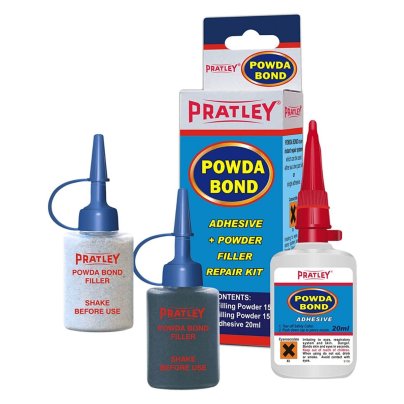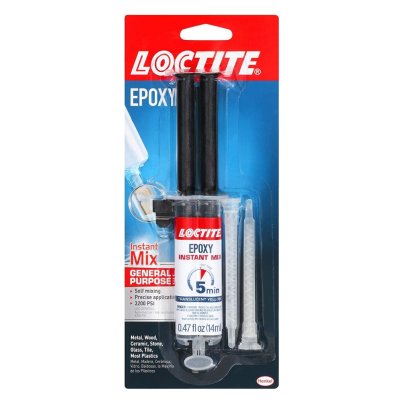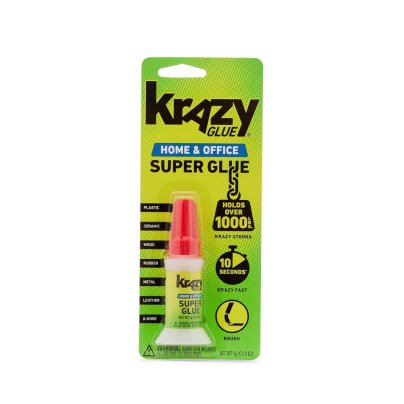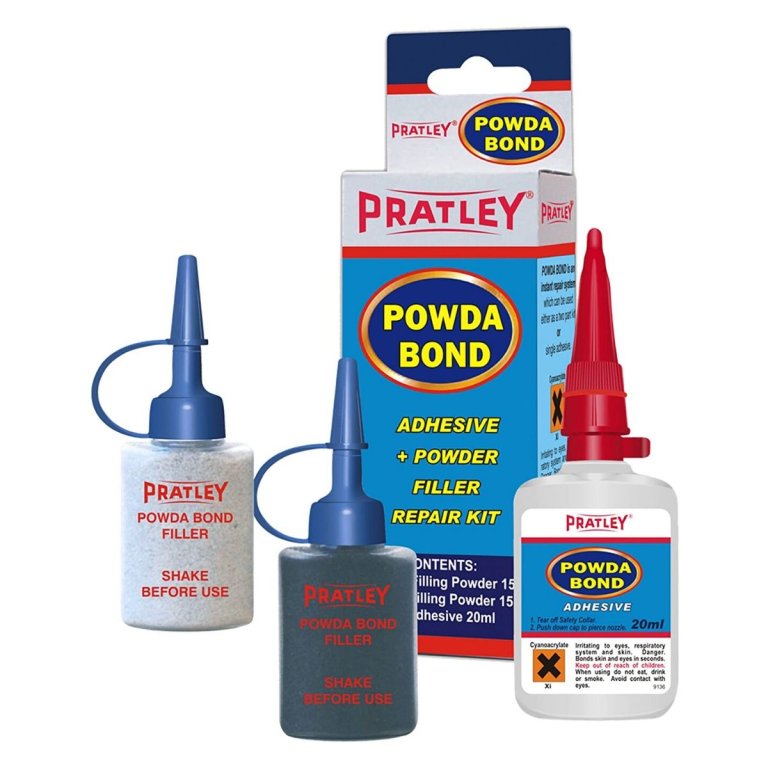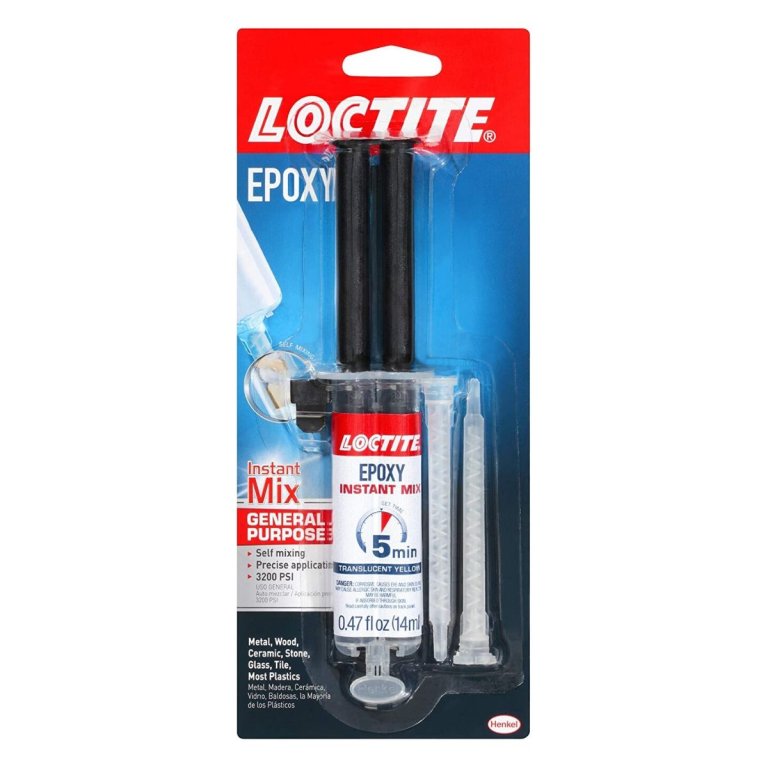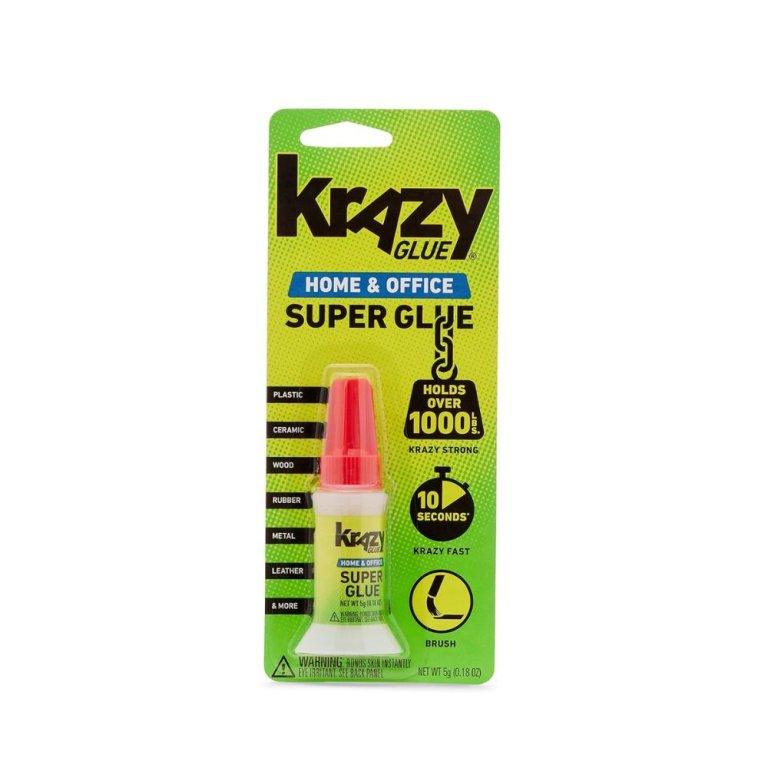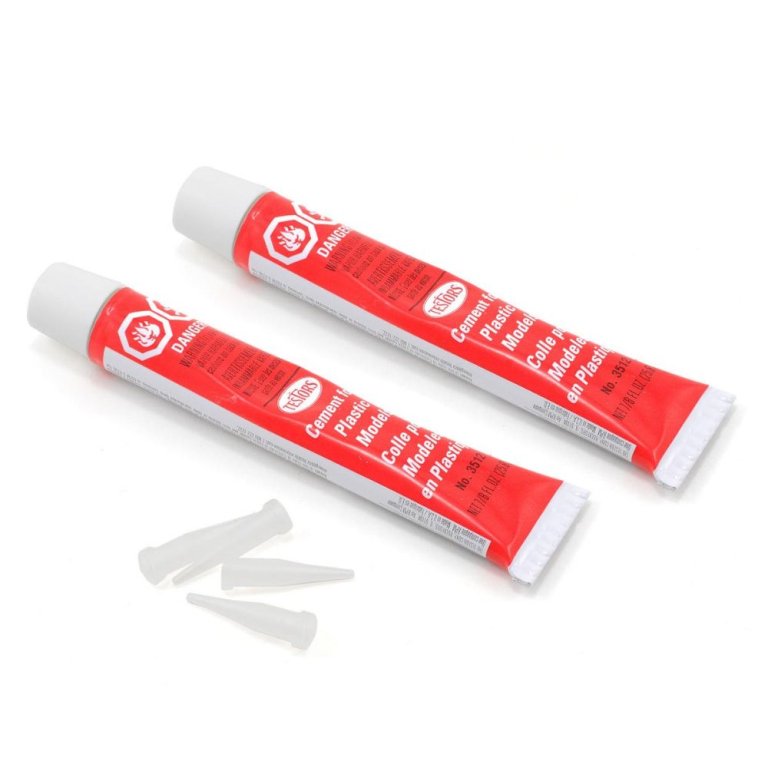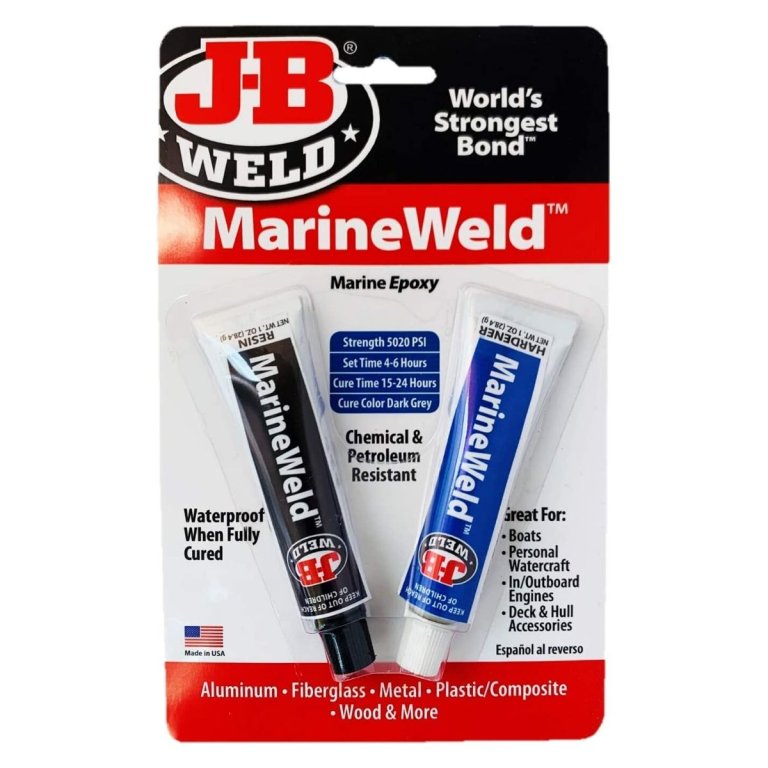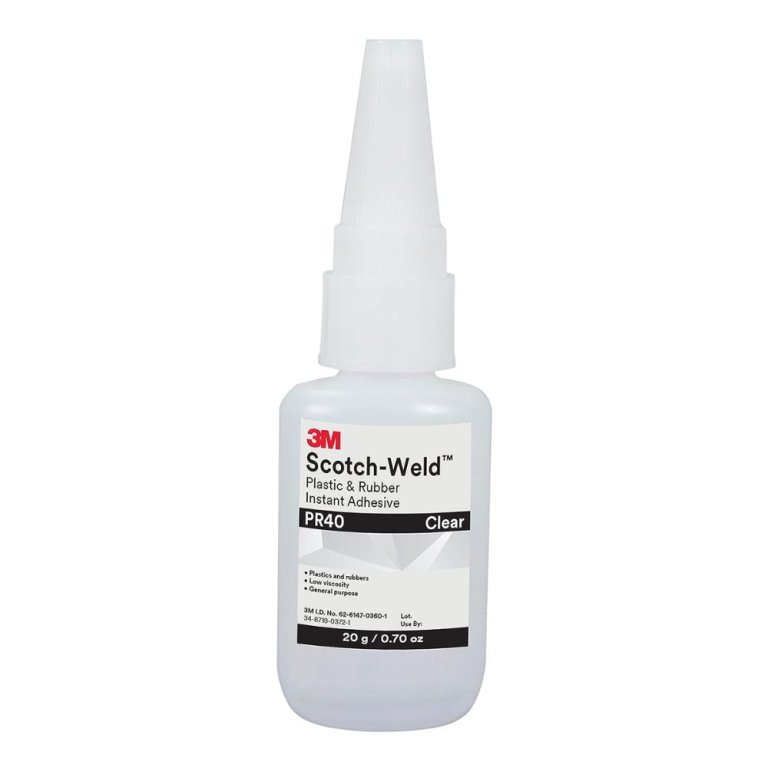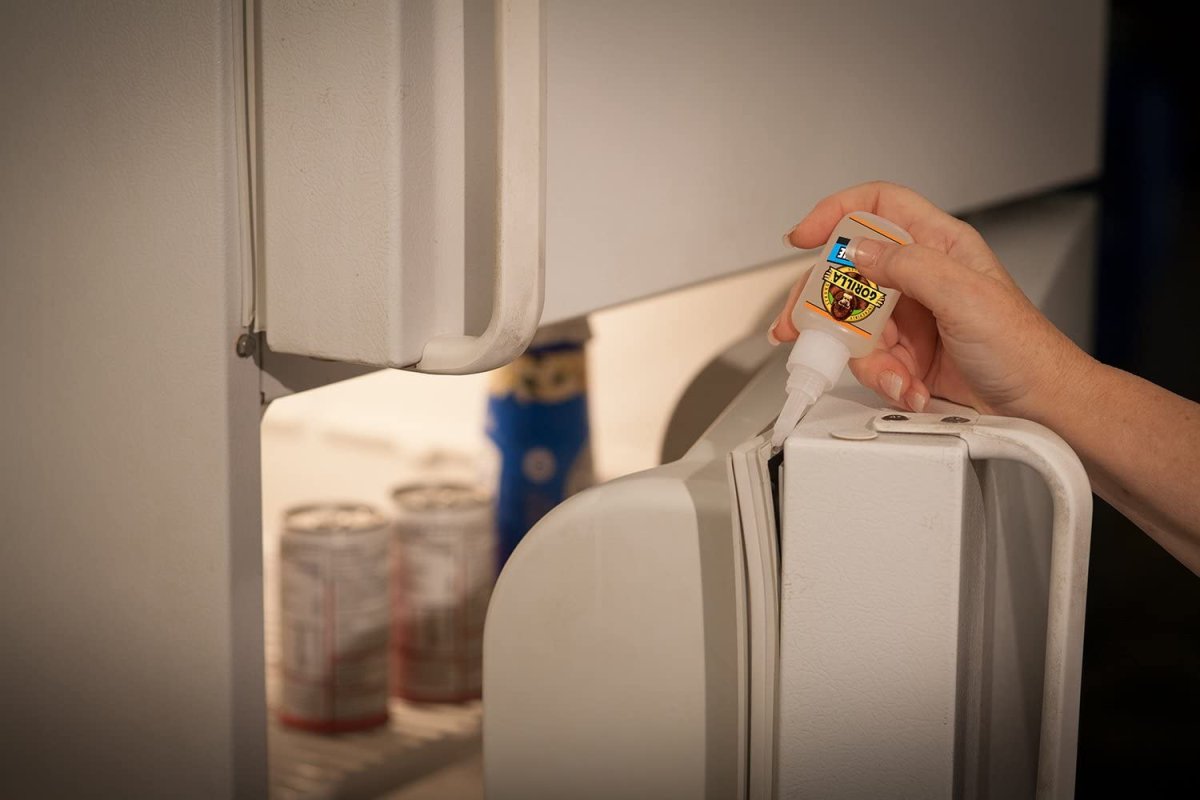
We may earn revenue from the products available on this page and participate in affiliate programs. Learn More ›
One formula definitely does not fit all when it comes to good glue for plastic DIY projects. Adhesives are chemically designed to work with certain materials. Wood glue, for example, is great for carpentry but won’t be effective on metal. Even super glue—possibly your default option for just about anything—has its limits, as its active ingredient (cyanoacrylate) doesn’t adhere well to smooth surfaces.
We recommend the Pratley Powda Bond Adhesive Repair Kit as our best overall pick because of its powerful super glue and powder formula and compatibility with a wide variety of materials.
Trickier still, gluing plastic depends largely on the target material. A glue that works well to bond plastic to plastic may be a poor choice to adhere plastic to metal or wood. Most DIYers maintain a collection of adhesives to get the job done right the first time, so don’t get stuck using the wrong product. Read on to discover the best glues for plastic that we selected—some of which we even tested—and find out why the choices below rate as the top options for all your plastic bonding needs.
- BEST OVERALL: Pratley Powda Bond Adhesive Repair Kit
↓ Jump to Review - BEST BANG FOR THE BUCK: Loctite Epoxy Five-Minute Instant Mix
↓ Jump to Review - BEST SUPER GLUE: Krazy Glue Home & Office Super Glue
↓ Jump to Review - BEST FOR PLASTIC TO PLASTIC: Testor Corp Cement Glue Adhesive
↓ Jump to Review - BEST FOR PLASTIC TO METAL: J-B Weld MarineWeld Twin Tube Marine Epoxy
↓ Jump to Review - BEST FOR PLASTIC TO WOOD: Gorilla Clear Epoxy
↓ Jump to Review - BEST FOR PLASTIC TO RUBBER: 3M Scotch-Weld Plastic & Rubber Instant Adhesive
↓ Jump to Review - BEST FOR ABS PLASTIC: Plastruct Plastic Weld
↓ Jump to Review
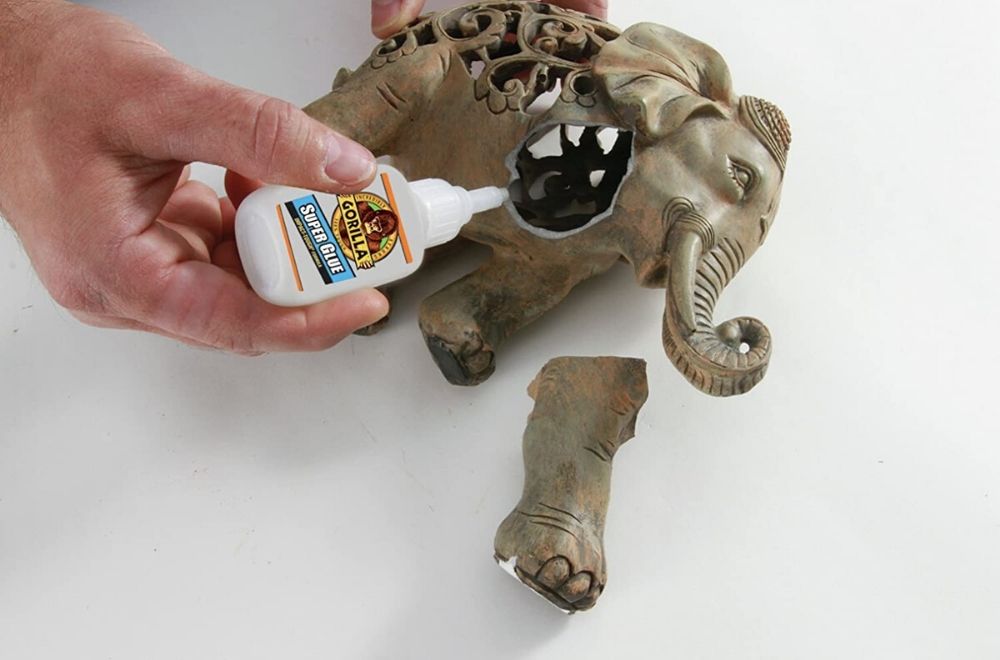
How We Chose the Best Glue for Plastic
We researched and hands-on tested some of the best plastic glue in a variety of categories offered by the top brands with high customer satisfaction. The top picks for bonding plastic were selected for testing or thoroughly researched based on type, compatible materials, curing time, quantity, and ease of application.
The list features different types of glue for bonding plastic including super glue, epoxy, and model cement. We prioritized options with included applicators that cure within 24 hours. Several of the best glues to use on plastic are weather- and water-resistant. We included plastic-to-plastic glue and glues that form a permanent bond with other materials including metal, wood, composite, stone, brick, and concrete. Each pick for the best plastic adhesive is available in volumes between 13.9 and 59.14 milliliters.
Our Top Picks
The top-rated products below were chosen and/or tested based on their quality, price, and customer satisfaction to help you find the best glue for all your plastic projects. Each of our selected products has been listed with their most notable pros and cons as well as some product specifications to help you narrow the search.
Best Overall
Pratley Powda Bond Adhesive Repair Kit
What We Like
- Comes with a powerful powder and super glue adhesive for effectiveness; can be used for gaps and filling
- Cures in 30 seconds; can be sanded, filled, and/or painted immediately after being cured
- Can be used on automotive parts, electrical switches, remotes, tools, and pool pump valves
What We Don’t Like
- Some users may not need the included filling powder
- Not intended for use on polyethylene, polypropylene, or polytetrafluoroethylene (PTFE) plastics
Product Specs
- Type: Combination super glue and powder
- Compatible materials: Wood, glass, concrete, plastic, and rubber
- Volume: 20 milliliters
- Curing time: 30 seconds
The Pratley Powda bond adhesive uses a combination of filling powder, which is a wood aggregate, and heavy-duty cyanoacrylate, or super glue, to form a powerful bond that can be sanded, filed, drilled, tapped, and painted without losing its structural integrity. As the best super glue for plastic, it bonds to both rough and smooth plastics, including wood, glass, concrete, plastic, and rubber, within 1 minute of all liquid being absorbed.
The included filling powder is used for repairing holes or gaps between objects, as when a piece of the object is missing. Among the strongest adhesives for plastic, this combination product is placed into the hole or carefully applied in a gap to create a permanent bond that also fills the gap or hole. The powder comes in black or white but can be mixed for a metallic gray appearance. As filler, this adhesive can be used on automotive parts, electrical switches, remotes, tools, pool pump valves, and many other applications. If you don’t need the powder for filling, the heavy-duty cyanoacrylate works as a powerful adhesive on its own.
Get the Pratley glue for plastic at Amazon.
Best Bang For The Buck
Loctite Epoxy Five-Minute Instant Mix
What We Like
- Suitable for a wide range of projects and provides a weather-, water-, and solvent-resistant bond
- Easy-to-use self-mixing syringe is easy to apply with precision in hard-to-reach areas
- Can be painted, filed, and/or sanded after curing in just 30 seconds
- Affordable adhesive compared to other options on the market
What We Don’t Like
- Must be applied immediately after mixing before resin and hardener set
Product Specs
- Type: Epoxy
- Compatible materials: Metal, glass, ceramic, wood, plastic, china, tile, fiberglass, concrete, and stone
- Volume: 14 milliliters
- Curing time: 24 hours
Loctite Epoxy Five-Minute Instant Mix works on metal, glass, ceramic, wood, many rigid plastics, china, tile, fiberglass, concrete, and stone. This value adhesive performs as well as higher-priced products for a wide range of projects, such as gap bonding, surface repairs, and laminating. The strong epoxy glue for plastic is easy to use thanks to a self-mixing syringe and the push of a single connected plunger to combine resin and hardener before application.
Once mixed, resin and hardener set within 5 minutes, so be sure to apply it immediately. The result is a high-strength, permanent bond that is weather-, water-, and solvent-resistant. After 24 hours to fully cure, the epoxy glue can be painted and sanded without losing tensile strength.
Get the Loctite glue for plastic at Amazon or Ace Hardware.
Best Super Glue
Krazy Glue Home & Office Super Glue
What We Like
- Bonds to plastic, ceramic, rubber, wood, leather, metal, and more
- Can be applied on gapped, uneven, or vertical surfaces; holds up to 1,000 pounds of weight
- Comes with a nonclogging precision tip as well as a brush applicator
- Cures in 10 seconds; suitable for quick and easy jobs in offices, schools, or when crafting
What We Don’t Like
- Some users have reported that the cap of the brush applicator can become stuck to the container
Product Specs
- Type: Multipurpose
- Compatible materials: Plastic, ceramic, rubber, wood, leather, metal, and more
- Volume: 0.18 ounces
- Curing time: 10 seconds
Crafting, schoolwork, and office tasks can benefit from this small but mighty tube of Krazy Glue. Made to bond with vertical, uneven, or gapped surfaces like plastic, ceramic, rubber, wood, leather, metal, and more, this glue comes at a small price point and has a precision nozzle and a brush-on applicator. The bottle is also nonclogging and the bristles on the brush applicator are designed to prevent them from sticking together. This adhesive for plastic creates an excellent bond in just 10 seconds and holds up to 1,000 pounds. Though this option is only 0.18 ounces, it comes in a six-pack for those who frequently use super glue.
What our tester says: Tom Scalisi, a Bob Vila writer and product tester, notes in The Best Super Glues that “Krazy Glue proved to be remarkably strong and effective, and only a small amount is needed to create a solid bond between surfaces. In testing, we found that the glue works on virtually all surfaces, including some hard-to-bond smooth plastic surfaces. Krazy Glue successfully bonded eyeglass frames, pieces that broke off a toy playset, and PVC pipe.”
Get the Krazy Glue glue for plastic at Amazon.
Best For Plastic To Plastic
Testor Corp Cement Glue Adhesive
What We Like
- Creates a strong adhesion between plastics; welds the components together
- Comes with precision tips for accurate application in hard-to-reach spots
- Suitable for crafting and model-making tasks
What We Don’t Like
- Strong chemical smell; must be used in a well-ventilated area
- No curing time is mentioned on the manufacturer website
Product Specs
- Type: Model cement
- Compatible materials: ABS and polystyrene plastic
- Volume: 25.8 milliliters (per bottle)
- Curing time: Not specified
Nothing beats a quality model cement for joining ABS plastic or polystyrene plastic, and Testor Corp’s cement glue makes the job even easier thanks to multiple precision tips that ensure accurate application. Toluene melts the plastic on application and polystyrene welds plastic objects together once the toluene reaction ends, making it the strongest glue for plastic to plastic.
Be sure to place pieces correctly to avoid visibly melted plastic around the glued area. Note: When one glues plastic to plastic, they will always want to use it in a well-ventilated area due to the cement’s strong chemical smell.
Get the Testor Corp glue for plastic at Amazon.
Best For Plastic To Metal
J-B Weld MarineWeld Twin Tube Marine Epoxy
What We Like
- Waterproof formula comes ready to mix and use; suitable for aquariums and boats
- 5,020 pounds per square inch (PSI) tensile strength can withstand immense pressure and strain
- Excellent heat-resistant glue for plastic withstands up to 550 degrees Fahrenheit; suitable for use near machinery
- Can be tapped, filed, sanded, molded, and drilled once cured
What We Don’t Like
- Takes up to 24 hours to fully cure; may not be ideal for quick fixes
Product Specs
- Type: Epoxy
- Compatible materials: Fiberglass, plastic, metal, composite, and wood
- Volume: 28.4 grams (per bottle)
- Curing time: 16 to 24 hours
The J-B Weld waterproof glue for plastic was designed for repairing boats, fixing dock pieces, or fastening metal hardware at the marina. Among the best adhesive for plastic and metal, it is heat-resistant up to 550 degrees Fahrenheit and has a tensile strength of 5,020 PSI, which means that it would require 5,020 pounds of force to pull apart two objects fastened using this glue. It can be used with aluminum, fiberglass, metal, plastic, composite, and wood. It’s a two-tube epoxy that comes ready to mix at a ratio of 1:1.
The epoxy takes between 4 to 6 hours to set. This gives you a long period of adjustment to ensure that the adhesive and materials are set just right, but it’s best to clamp pieces in place once you have a perfect position. The complete cure time is between 16 and 24 hours, and once cured, it can be tapped, filed, sanded, molded, and drilled.
Get the J-B Weld glue for plastic at Amazon, Ace Hardware, or The Home Depot.
Best For Plastic To Wood
Gorilla Clear Epoxy
What We Like
- Can be used for gap filling and repairing exterior siding; comes with a precision syringe applicator
- Water-resistant formula is suitable for use in households and automobiles
- Clear, spotless finish is not visible or obvious after application
What We Don’t Like
- Not a waterproof glue for plastic; may not be suitable for use in aquariums or boats
Product Specs
- Type: Epoxy
- Compatible materials: Plastic, wood, metal, ceramics, brick, stone, concrete, glass, and foam
- Volume: 25 milliliters
- Curing time: 24 hours
Gorilla two-part epoxy glue for plastic is useful for gap filling; repairing exterior siding; or gluing plastic, wood, metal, ceramics, brick, stone, concrete, glass, and foam. It comes in a dual-syringe form that uses a combined plunger to push the resin and hardener out through the same point.
Once mixed, the epoxy glue sets in 5 minutes, allowing you time to ensure proper placement before permanent adhesion. The epoxy is water-resistant (though not waterproof) so it can hold up fairly well when used on outdoor items. A good plastic glue, the formula takes 24 hours to fully cure to a completely clear, spotless finish.
Get the Gorilla glue for plastic at Amazon, Ace Hardware, or The Home Depot.
Best For Plastic To Rubber
3M Scotch-Weld Plastic & Rubber Instant Adhesive
What We Like
- The professional-grade formula is ideal for heavy-duty applications; sticks to a variety of materials
- Precision tip is suitable for applying streams or beads in hard-to-reach areas
- Low-viscosity formula will not be visible once dried; blends in seamlessly to whatever it is applied to
- Dries to the touch in just 15 seconds; tensile strength of 2,000 PSI once cured
What We Don’t Like
- Manufacturer has stated that this option is not intended for recreational use
Product Specs
- Type: Multipurpose
- Compatible materials: Plastics, rubber, and more
- Volume: 0.70 ounces
- Curing time: 24 hours
Plastic and rubber are typically hard to glue together, but this option from 3M makes the job easy. Suitable for a variety of surfaces, this instant adhesive is among the strongest glues for plastic and comes with a precision nozzle for streams and beads, making it appropriate for a variety of tasks. Plus, this is a low-viscosity formula so it will not be visible after drying to the touch in just 15 seconds.
When fully cured in 24 hours, this top pick has a tensile strength of 2,000 PSI. As this option is intended for professional use, the manufacturer has stated that it’s not suitable for use in schools or for recreational use.
What our tester says: Debbie Wolfe, a Bob Vila product tester and writer, notes in our tested guide that “we used the 3M Scotch-Weld adhesive to glue various types of rubber, including floor mats, gaskets, jar seals, and pencil erasers. The glue quickly bonded rubber-to-rubber surfaces and rubber to most plastics. We liked how easy it was to control the glue’s flow, thanks to its low viscosity and precision-tip applicator. It doesn’t have a strong smell, which made it pleasant to use indoors.”
Get the 3M Scotch-Weld glue for plastic at Amazon.
Best For Abs Plastic
Plastruct Plastic Weld
What We Like
- Permanently bonds ABS, butyrate, styrene, acrylic, plexiglass, and other plastics
- Ideal for models, minor repairs, and automotive part repairs; also works as a liquid filler
- Includes applicator brush for precision when applying
What We Don’t Like
- Not water-resistant; not suitable for use on boats or in aquariums
- Must be applied with a respirator in a well-ventilated area
Product Specs
- Type: Model cement
- Compatible materials: ABS, butyrate, styrene, acrylic, plexiglass, and other plastics
- Volume: 59.14 milliliters
- Curing time: Not specified
Apply this plastic cement with the included brush and permanently bond ABS to butyrate, styrene, acrylic, plexiglass, and most other plastic types. This is one of the best glues for hard plastic that acts by melting the surface of the target material and using polystyrene to polymerize the two objects into a new bonded structure with nearly the same strength as the original material.
Plastruct’s glue for hard plastic is perfect for models, minor repairs, plastic automotive part repairs, and many other applications. Caution: The fumes from this plastic cement are flammable and hazardous to your lungs, so only use in a well-ventilated area while wearing a respirator.
Get the Plastruct glue for plastic at Amazon.
Jump to Our Top Picks
What to Consider When Choosing a Glue for Plastic
A good plastic adhesive should survive in certain conditions. When deciding which glue for plastic is best for your project, it is important to consider several factors first, including the type of glue, the compatible materials, the adhesive strength, and the durability. Here are some of the most common elements shoppers will want to keep in mind when choosing a glue for plastic.
Types of Glue for Plastic
Strong glues designed for plastic come in several different types, including cyanoacrylate (super glue), model cement, epoxy, and multipurpose.
Cyanoacrylate
While some adhesives rely on evaporation to form a bond between two objects, cyanoacrylate (commonly known as super glue) uses anionic polymerization to form a chemical bond when it comes in contact with hydroxyl ions in water.
This essentially means that super glue only requires water to bond to a substance. Since almost any surface has at least some moisture on it from humidity in the air, super glue can form a strong bond between virtually all surfaces. The one exception is hard, smooth plastics; for optimal results in projects like automotive body repairs, use sandpaper to scuff smooth plastic before applying super glue. Also, keep in mind that cyanoacrylate can discolor or degrade acrylics, so it wouldn’t be ideal for gluing plexiglass windows, for example.
Model Cement
Model cement relies on solvents like butanone, toluene, or dichloromethane to melt plastic on application as well as a filler, such as polystyrene, to then weld the plastics together. This method of joining materials makes model cement only effective on plastic. It cannot be used with metal, wood, ceramic, stone, or concrete. As the name implies, this adhesive is commonly used for joining plastic components while building models; it’s also used to connect ABS pipe together and in plumbing with PVC pipe.
Epoxy
Epoxy normally comes in two tubes with separate or connected plungers, depending on the brand. One tube is filled with a resin, the other with a hardener. When the two are pushed out of the tubes onto a surface and combine, they create a very strong, durable, and water-resistant adhesive. Epoxies are best for metal, ceramics, rubber, wood, and certain plastics.
While some epoxies form an incredibly strong bond in only 5 minutes, others can require more than 2 hours of clamping, 12 hours of drying time, and 1 to 2 days until they are fully cured. When used properly, epoxies are extremely versatile and can be seen in many industries, including electronics, medical devices, and aerospace; DIYers rely on waterproof epoxies for boat and dock repairs.
Multipurpose
Multipurpose glues—including carpenter’s glue, white glue, school glue, and wood glue—are intended for porous materials like wood, paper, cloth, pottery, and nonstructural wood bonds. They aren’t effective for nonporous materials like plastic and metal because polyvinyl acetate, the active ingredient, relies on evaporation and a porous surface to form a bond between two objects. Though great for everyday use, multipurpose glues may require clamping in place for up to an hour so water can evaporate from the glue, leaving the polyvinyl acetate behind to form a bond. Full curing takes between 18 and 24 hours.
Adhesive Strength
Plastics for glues can be used in automotive, electrical, crafting, school, or office tasks. Each glue has a different tensile strength depending on its specific use. Some options are capable of withstanding 2,000 to 5,020 PSI of pressure. However, small household glues like super glue may only be able to withstand over 1,000 PSI. Some options are also water-, weather-, temperature-, and solvent-resistant, which provides added durability when under pressure or around moving components.
Flexibility
Flexibility is an important factor in glues for plastics as the objects being repaired must move and bend once the glue has cured. These glues are used on automobiles, boats, aquariums, and more. They’re also used for crafts or office tasks, allowing objects to bend when under duress. Read the product manual of any item needing repair to ensure that the glue being used will provide the appropriate flexibility.
FAQs
For best results, it’s wise to fully understand how to properly use glues designed for bonding plastic. Find answers to some of the most common questions about these adhesives below.
Plastics are traditionally hard to glue since most have a nonporous surface that creates limited adhesion. Plastics typically come in categories 1, 2, 4, and 5, and category 1 is the hardest to glue. However, any glues that can adhere to polyethylene or polypropylene are ideal for most plastic varieties.
Soft and hard plastics can be glued together with the right product. The best option for soft and hard plastic gluing is the Loctite glue for plastic as it is capable of adhering to almost all plastic varieties and has a water-resistant, nonshrinking epoxy formula that dries clear.
Plastic glue is a broader category of glues that super glue (cyanoacrylate) belongs to because of its ability to bond with some plastics. Epoxies, model cement, and multipurpose glue (polyvinyl acetate) could also be considered plastic glue.
Super glue takes seconds to dry on plastic, but typical options may take up to 24 hours to fully cure. When applying glue on plastic in machinery or aquariums, users will want to be sure to let the glue set for the full curing time before any components begin to move to prevent malfunction or breakage.
According to the manufacturer, Gorilla Glue can work well with many plastic types, but it’s not recommended for use with polypropylene or polyethylene plastics, or with rubber that has a high oil or plasticizer content. The company does make specific products for these materials, however.
If you get plastic glue on your hands, soak them in warm water and massage the skin to try to remove the glue. If this fails, apply acetone (nail polish remover) to remove the glue, making sure to wash well after use and apply lotion, as acetone is drying to skin.
